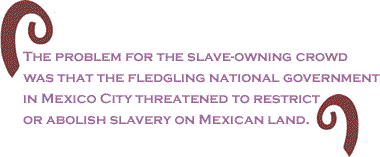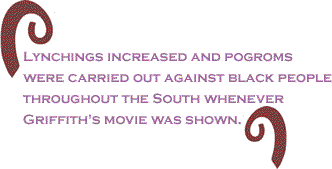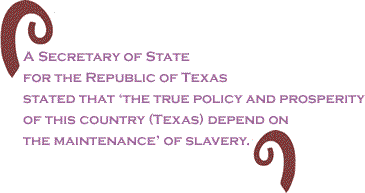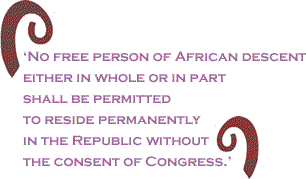
|
|||||||||||||||||||||
 |
The following article previously appeared in Counterpunch. Yet
another film version of the story of the Alamo has descended
on a movie theatre near
you. According to the hoopla, the defenders of the Alamo fought
for "liberty" and "freedom" and – as their
noble commander says in a film clip – to "show the world
what patriots are made of." A stirring ad run during the
Superbowl intoned that, at the Alamo, "Ordinary men will
become heroes."
We know that – in the Old West trail drives – at least one
out of every five cowboys was black. Yet hardly any black characters
have been portrayed
in
the thousands of western films made during the past 100 years. Have you
seen any black guys on horses with Gene Autry, Roy Rogers,
John Wayne, Jimmie
Stewart, or Gary Cooper? What about television serials like Gunsmoke
and Bonanza? Search for black cowboys in Kevin Costner's Wyatt
Earp and Kurt
Russell's Tombstone.
Another early Western film maker, William S. Hart, continued
this tradition in his movies. One of the most notorious subtitles
in Hart's
silent movie
Hell's Hinges describes the villain as "mingling the oily craftiness
of a Mexican with the deadly treachery of a rattler, no man's open enemy
and no man's friend." Phew!
Bowie
took his share of the profits and went to "Texas" to
join Stephen F. Austin's group of Anglo colonists. He then became
involved in
a scheme to fraudulently acquire land grants from the Mexican
government and ultimately garnered thousands of acres of land.
As the crisis loomed
between the Anglo colony and the Mexican government, Bowie found
himself on the side of William Travis' "War Party," a
group that brooked no conciliation with the Mexican government and was dedicated to
the creation of a "Republic of Texas."
The Alamo defenders fought and died for the constitution of the Republic of Texas which declared in Sections 6, 9 and 10:
Contrary to popular
mythology and the spurious history of White Man Movie Fiction,
the story of the Alamo is not a story of a fight for freedom.
It is the story of a fight for slavery. It is important for
us to look honestly at our cultural and historical mythologies
so that we can learn from them. By perpetuating the old myths,
we create a stagnant and dangerous platform which prevents
our cultural and artistic growth as a society. |
April
15 2004 |
|||||||||
|
|||||||||
|
|
|||||||||
| Printer Friendly Version | |||||||||
 |
|||||||||
| |
|||||||||
| |
|||||||||




























